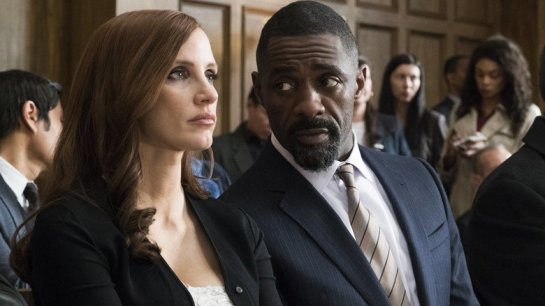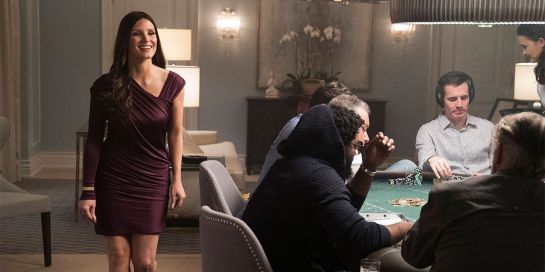
Jessica Chastain already had one knockout 2017 performance under her belt with the World War 2 drama “The Zookeeper’s Wife”. Now you can make it two with her latest film, the biographical crime drama “Molly’s Game”. It’s an adaptation of the 2014 memoir of Molly Bloom, once an Olympic hopeful in freestyle skiing but later the runner of exclusive underground poker games.
Chastain plays Molly Bloom and is given an incredibly meaty role by screenwriter Aaron Sorkin. This also marks Sorkin’s feature film directorial debut. Much like his Oscar-winning script for “The Social Network”, “Molly’s Game” slickly weaves together a current day legal drama with flashbacks that tell of Molly’s rise and decade-long run as the “poker princess” which eventually leads to her arrest by the FBI.

Sorkin’s signature dense, fast-paced dialogue zips us through the backstory with the help of Molly’s narration. It comes in spurts and covers a lot of ground – her time at home with her hard-nosed father/coach (another fine supporting turn by Kevin Costner), her move to Los Angeles after a horrible skiing accident, and her high-stakes poker games that start in LA and end in New York.
Throughout these flashbacks we meet an interesting lot of characters. Take Michael Cera who plays a movie star simply known as Player X. In Molly’s memoir she named several A-listers who frequented her games – movie stars Leonardo DiCaprio and Ben Affleck, rapper Nelly, and baseball star Alex Rodriguez to name a few. Many believe Cera’s smarmy Player X is an amalgam of these big named celebrities who helped draw billionaires to Molly’s games. But it seems Player X represents one particular movie star who the book paints as particularly reprehensible – Tobey Maquire.
The dialogue also shines in the current day scenes with Molly and her lawyer Charlie Jaffey. He’s played by Idris Elba, so perfect in tone and intensity. Delivering Sorkin’s words can’t be easy. It demands a quick tongue and even quicker wit. Elba’s delivery is smooth as silk and he shares a well tuned chemistry with Chastain. At times there is a fierce energy between the two but there are also quieter moments which offer a unexpected amount of warmth and levity.

All of it is kept in sync through Sorkin’s impressive direction. He deftly manages his mile-a-minute language and structural hopscotch while giving his performers plenty of space to work. The film also packs a surprising visual punch that matches the spirit and vigor of the dialogue. It’s nothing eye-popping but it’s as sharp and snappy as it’s lead character. And most importantly Sorkin keeps himself out of the way, trusting his material and his actors.
Aaron Sorkin has shown a fascination in self-made success stories as evident by his last four movies. “The Social Network”, “Moneyball”, “Steve Jobs”, and now “Molly’s Game” all tell of individuals who bucked systems and against all probability propelled themselves to success. “Molly’s Game” may be the best of the bunch. It’s one part invigorating character study and one part stunning expose. It features a trifecta of top-notch performances from Elba, Costner, and especially Chastain. It does feel long at 140 minutes yet it’s never dull nor does it run out of gas. Sorkin has too much to say to ever allow that to happen.
VERDICT – 4.5 STARS




